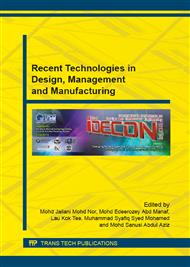p.59
p.63
p.68
p.73
p.79
p.83
p.88
p.93
p.98
Mechanical Properties Comparison of Stainless Steel 304L and Carbon Steel BS1387 Prior to Orbital Welding
Abstract:
Dissimilar metal joint (DMJ) is one of many joining methods for welding processes which is common in the power plant, chemical and petrochemical industries. Stainless steel pipe and carbon steel pipe are the most widely used in this technique. In order to perform DMJ to these metals, it is important to understand the mechanical properties of both base materials. In this study, the characterizations of stainless steel (SS) 304L and carbon steel (CS) BS1387 were made. The SS 304L and CS BS1387 were cut out from pipes according to ASTM E 8M-04, before their tensile and microhardness properties were measured and evaluated. The results show that the SS 304L has better mechanical properties compared to the CS BS1387 pipe in terms of tensile strength and hardness. Due to the higher mechanical properties, SS 304L was selected to conduct higher temperature water, while CS BS1387 was selected to conduct room temperature water.
Info:
Periodical:
Pages:
79-82
Citation:
Online since:
May 2015
Authors:
Price:
Сopyright:
© 2015 Trans Tech Publications Ltd. All Rights Reserved
Share:
Citation:


